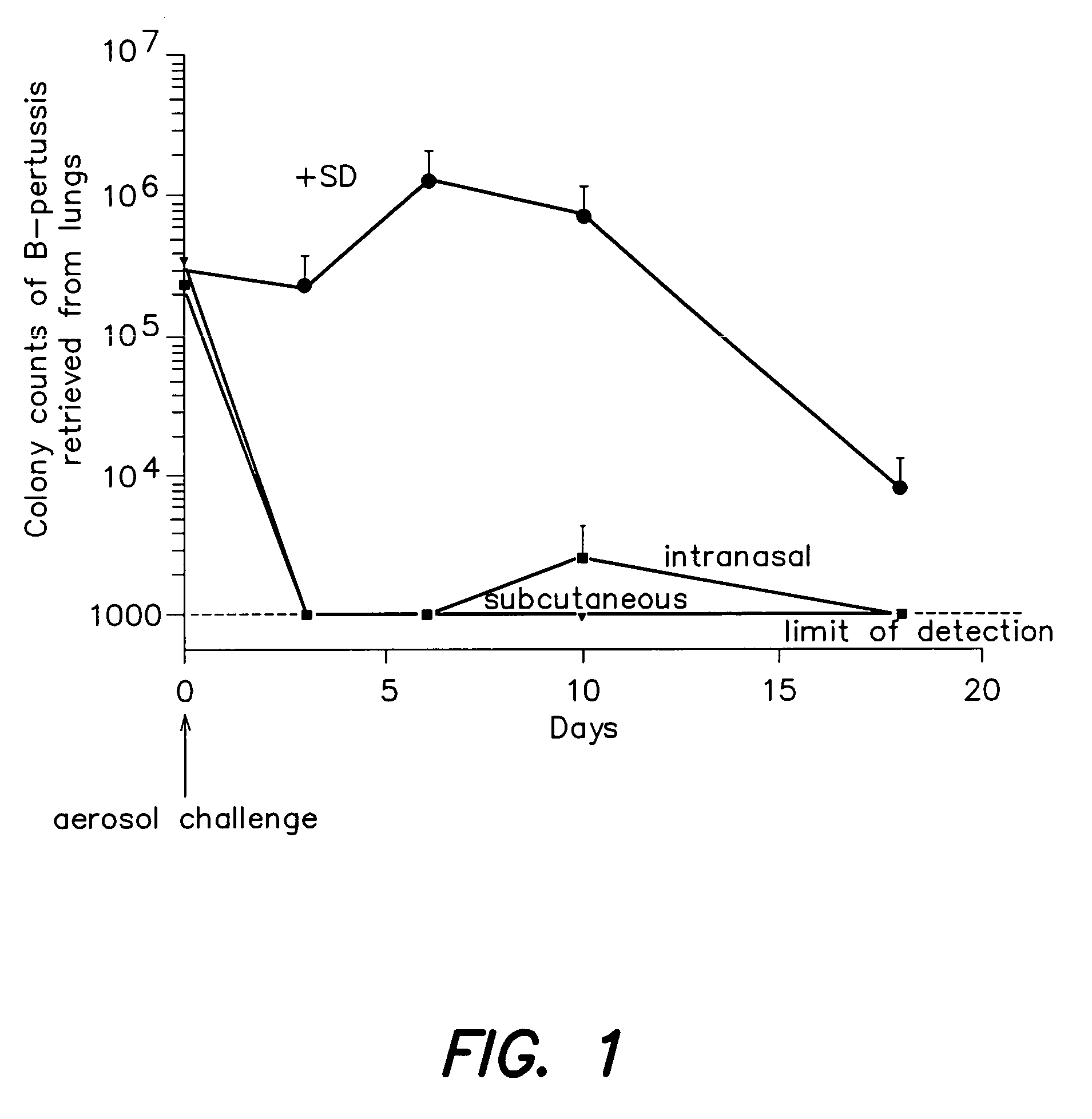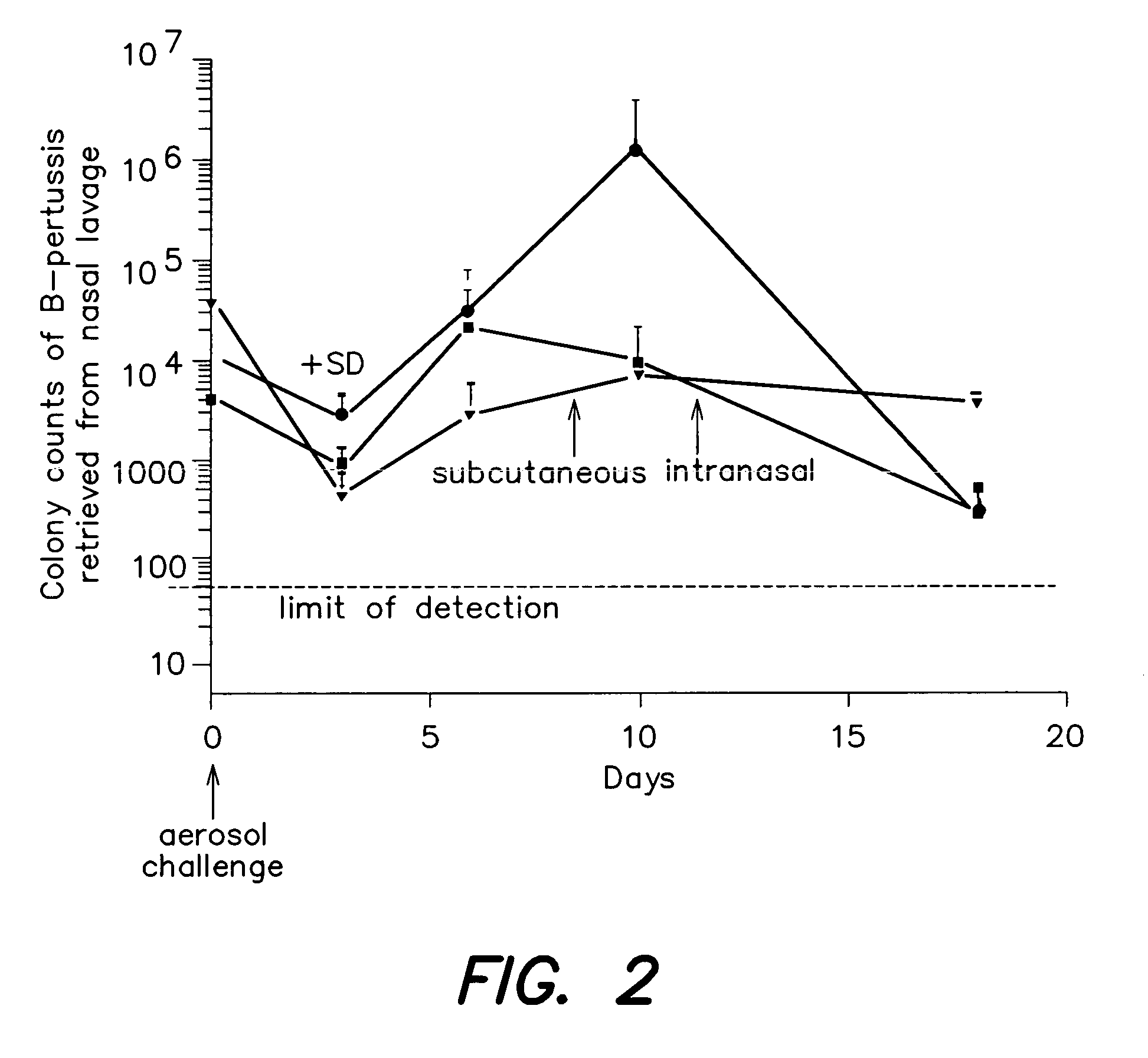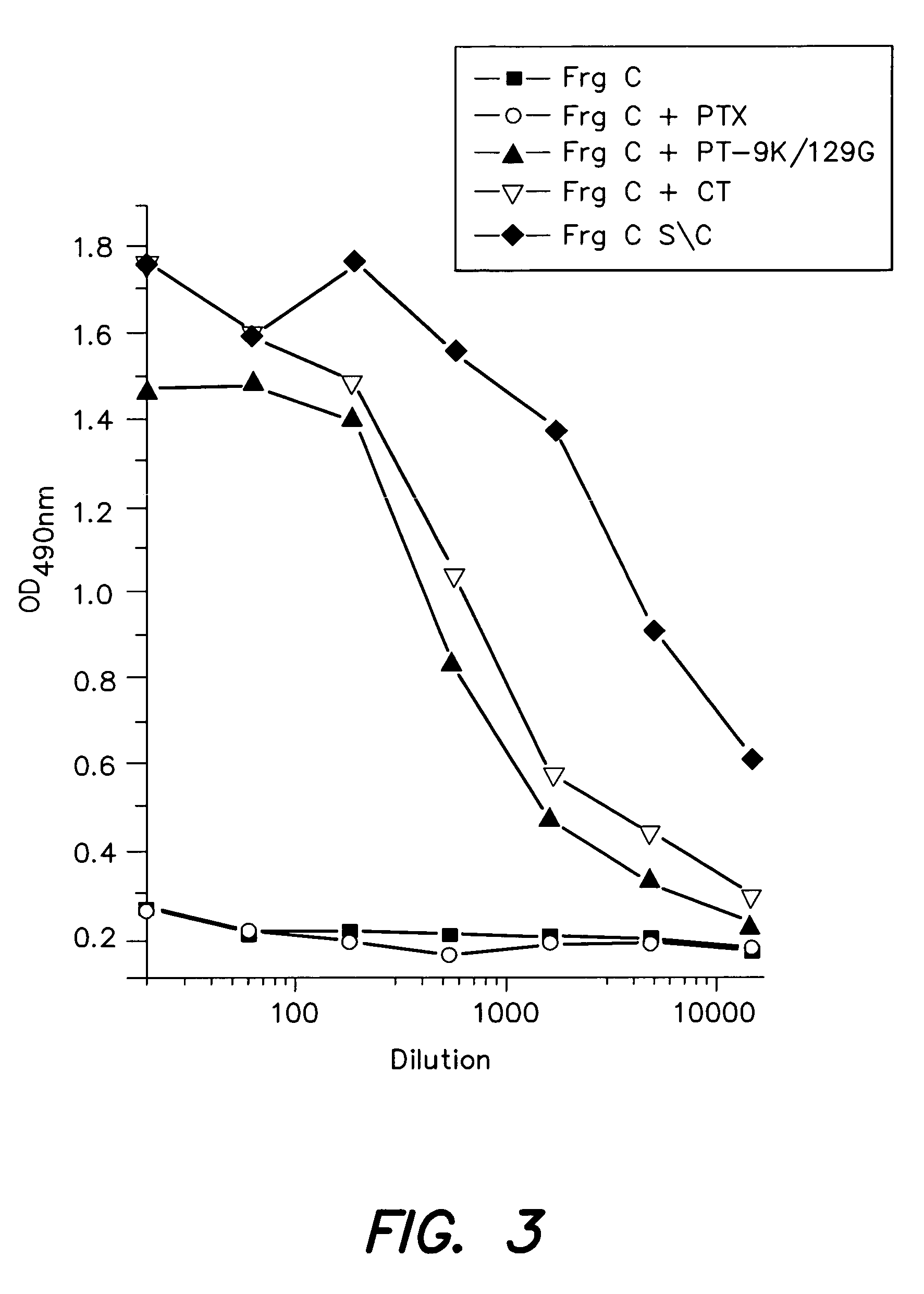Non-toxic double mutant forms of pertussis toxin as adjuvants
a pertussis toxin and mutant technology, applied in the field of vaccine compositions, can solve the problems of poor immunogenicity of replication immunogens, weak or undetectable secretory responses in the mucosa, and inability to induce strong or undetectable secretory responses, and achieve excellent adjuvant and good immunogenic activity
- Summary
- Abstract
- Description
- Claims
- Application Information
AI Technical Summary
Benefits of technology
Problems solved by technology
Method used
Image
Examples
example 1
Intranasal Immunisation with B. pertussis PT-9K / 129G Mutant
[0052]Mice were immunised intranasally three times with B. pertussis PT-9K / 129G mutant obtained from Sclavo (4.4 microgrammes per dose) or ovalbumin (10 microgrammes per dose) the second and third doses being administered at 28 days and 150 days respectively. Elispot analyses (see below) were performed after the second and third doses to determine the immune response in the lungs of the mice. The antibody responses in the lungs taken seven days after the second dose, and 5 days after the third dose are shown in Table 1 below. From the results it can be seen that the immune response to intranasally administration of mutant pertussis toxin PT-9K / 129G was significantly better than the response stimulated by ovalbumin (OVS).
[0053]
TABLE 1SerumLung ELISPOT - 2nd doseLung ELISPOT - 3rd doseRe-(ASC / 108 lymphocytes)(ASC / 108 lymphocytes)sponseIgGIgAIgMIgGIgAIgMPT2500270639442312311159K / 129GOVA4049244
example 2
Intranasal Immunisation with a Combination of FHA, P69, and Pertussis Toxin Mutant PT 9K / 129G
[0054]BALB\c mice were immunised intranasally with 10 microgrammes of each of the above antigens, 36 and 14 days prior to aerosol challenge with B. pertussis BBC 26. The outer membrane protein of B. pertussis, P69, was synthesised intracellularly in E. coli and purified as described in A. J. Makoff et al, Bio / Technology 8, 1030 (1990). Filamentous haemagglutinin (FHA) was provided by SKB under an exchange of reagents agreement. Antigens were diluted in PBS immediately prior to immunisation.
[0055]Adult (6–8 weeks) mice were anaesthetised with metathane and the antigen solution was added to the external nares of the mice as they recovered consciousness. Antigen was taken into the respiratory tract by inhalation.
[0056]The results obtained from the analysis of colony forming units of B. pertussis in the lungs are shown in FIG. 1. For comparison purposes the corresponding figures obtained from su...
example 3
Serum and Secretory Immune Responses to Fragment C, PT, PT 9K / 129G and CT in Intranasally Immunised Mice.
[0058]Groups of adult female outbred NIH:S mice were immunised intranasally (I\N) with 10 μg of fragment C (FRG C) alone or admixed with 5 μg of cholera toxin (CT), active pertussis toxin (PTX) or PT-9K / 129G 25d apart. The cholera toxin was obtained from Sigma (Dorset, UK); the active pertussis toxin was obtained from Calbiochem (Nottingham, UK) or NIBSC (Herts., UK); and the mutant pertussis toxin PT-9K / 129G was obtained from IRIS. (Siena, Italy).
[0059]Prior to immunisation, the mice were anaesthetised with metathane and the antigen was added to the external nares of the mice as they recovered consciousness. Antigen was taken into the respiratory tract by inhalation.
[0060]As a comparison, a group of mice was immunised twice subcutaneously (S\C) with log μg of fragment C adsorbed to aluminium hydroxide gel (alhydrogel). Serum samples were taken 14 days after primary immunisation ...
PUM
| Property | Measurement | Unit |
|---|---|---|
| Immunogenicity | aaaaa | aaaaa |
| Toxicity | aaaaa | aaaaa |
Abstract
Description
Claims
Application Information
 Login to View More
Login to View More - R&D
- Intellectual Property
- Life Sciences
- Materials
- Tech Scout
- Unparalleled Data Quality
- Higher Quality Content
- 60% Fewer Hallucinations
Browse by: Latest US Patents, China's latest patents, Technical Efficacy Thesaurus, Application Domain, Technology Topic, Popular Technical Reports.
© 2025 PatSnap. All rights reserved.Legal|Privacy policy|Modern Slavery Act Transparency Statement|Sitemap|About US| Contact US: help@patsnap.com



